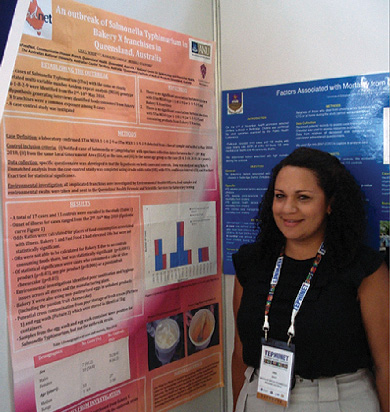Over the past few years I have been involved mainly in cancer research projects. Cancer provides a typical example of the inequity experienced by Indigenous peoples. Compared with non-Indigenous Australians, our cancer incidence rate is similar, if not lower, for all cancers combined,1-3 and yet our mortality rate is estimated to be 50% higher for many cancers.4 Our cancer patients have more comorbid disease;5 their cancer is more advanced when diagnosed3,5,6 and they are less likely to take up and complete treatment.5 These factors contribute to their poorer survival, but they do not fully explain the disparity. This disparity is almost absurd in our modern times but, sadly, is our country’s reality.
And I will have a story to tell.

- 1. Cunningham J, Rumbold AR, Zhang X, Condon JR. Incidence, aetiology, and outcomes of cancer in Indigenous peoples in Australia. Lancet Oncol 2008; 9: 585-595.
- 2. Moore SP, O’Rourke PK, Mallitt K-A, et al. Cancer incidence and mortality in Indigenous Australians in Queensland, 1997–2006. Med J Aust 2010; 193: 590-593. <MJA full text>
- 3. Valery PC, Coory M, Stirling J, Green AC. Cancer diagnosis, treatment, and survival in Indigenous and non-Indigenous Australians: a matched cohort study. Lancet 2006; 367: 1842-1848.
- 4. Miller J, Knott V, Wilson C, et al. Aboriginal and Torres Strait Islander Cancer Control Research Project. Canberra: Australian Government, Cancer Australia, 2010. http://www.canceraustralia.gov.au/publications-resources (accessed Jul 2011).
- 5. Condon JR, Cunningham J, Barnes T, et al. Cancer diagnosis and treatment in the Northern Territory: assessing health service performance for indigenous Australians. Intern Med J 2006; 36: 498-505.
- 6. South Australian Cancer Registry. Cancer incidence, mortality and case survival in the South Australian Aboriginal population. In: Epidemiology of cancer in South Australia 1977 to 1996. Adelaide: South Australian Health Commission, 1997: 13-19.





I thank Associate Professor Gail Garvey, Associate Professor John Condon and Ms Jenny Brands for their assistance in bringing this article to fruition.